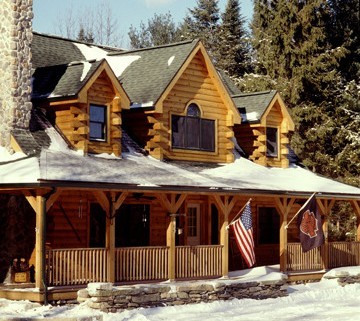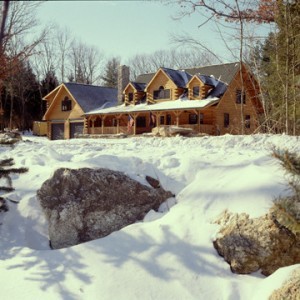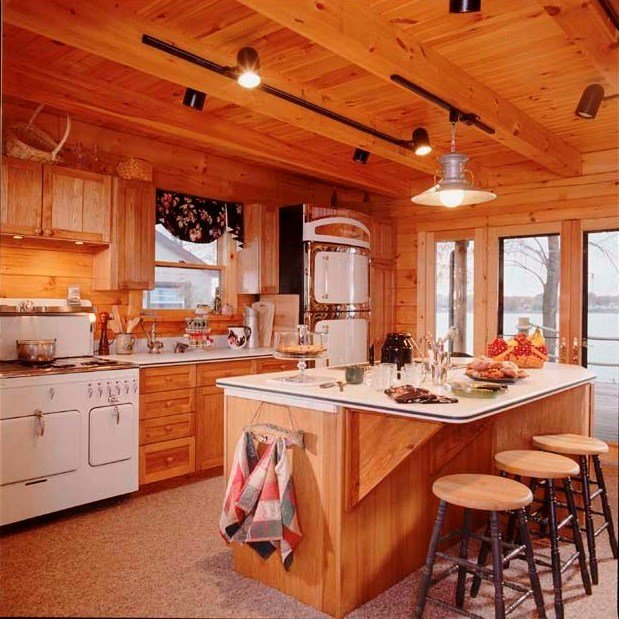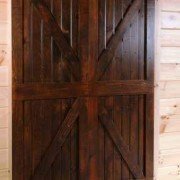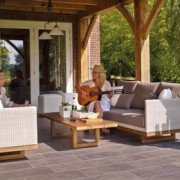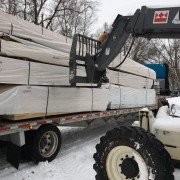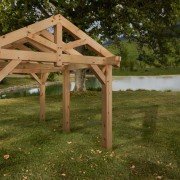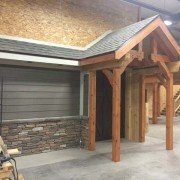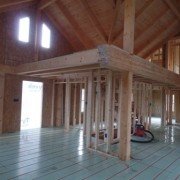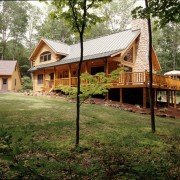Heat Pumps: An Option for Your New Log Home or Timber Frame Home
As those of us in the north are coming into these winter months, two questions on the minds of many future log home buyers are, “What’s the best way to heat my new log home, and how much is it going to cost?” While there are many options available, ranging from the age-old fireplace to the most modern of heating appliances, what we’re talking about today is heat pumps.
How Heat Pumps Work (the basics)
Traditional heat pumps have been around for years and are very similar to central air units and, during the summer months, they function very similarly, both helping to cool your living space. However, unlike an air conditioner which paradoxically uses heat to generate cool air, a heat pump works as a “transfer station,” transporting heat away from your home. This means that heat pumps can be more efficient and can cost less per unit of cool air to operate than their counterparts.
But, since most of us aren’t worried about keeping a house cool during the throes of winter, what does this have to do with heating your home? Because, during winter, heat pumps operate in exactly the reverse order. When the heating function is selected, valves inside the unit will change the flow in the opposite direction. A heat pump will gather heat energy from the exterior (Yes, heat energy still exists, even in cold temperatures!) and transport it into your home.
Heat pumps, whether they are cooling or warming, still require an air circulator, or air handling unit, with ductwork in order to disperse the air throughout the home. This is great news for log home builders in colder climates who may already be looking to install a furnace in their home, as a heat pump can be directly integrated with this system.
Heat Pumps: Things to Take Into Consideration
While heat pumps can be a great way to manage the comfort level of your log home, there are still some considerations which need to be taken into account.
Climate
Those building their home in a climate with cold winters will probably need to consider an alternative option as their primary heat source. As temperatures continue to plunge below freezing, there is less and less heat energy available to be brought into your home. Yes, there is heat energy still there, but it may not be enough to adequately heat your home on its own. This is where a heat pump can act as a supplemental heat source and potentially offer continued savings throughout the winter.
On the other hand, those living in warmer climates, where the temperature never really dips below 40º, will more than likely find that a heat pump alone is enough to meet both their heating and cooling needs.
Costs
Heat pumps are more expensive up front than central air units, but they are pulling double duty, after all. As we already mentioned, a heat pump’s efficiency can diminish in colder temperatures. If you are building in a colder climate and are looking at a primary heat source other than a furnace, then you may be better off purchasing the less-expensive standalone central air system to meet your cooling needs during the warmer months and heating with your preferred method during the winter.
And, speaking of heating costs, another point to consider are the rates of utilities in your specific location. Depending on the cost for electricity, natural gas/propane, heating oil, etc., it may actually be more expensive per unit of heat energy to run a heat pump during the winter. For instance, in some areas, the cost of electricity is significantly higher than that of natural gas, making a gas furnace the more cost-effective option for heating a home. This is where a dual fuel heat pump, which combines a heat pump with a gas furnace, allows you to capitalize on whichever energy source may be the most cost-effective for each season.
While a heat pump can be a great way to supplement a primary heating source and save on your energy bill, it is always best to examine all of the cost factors, both short- and long-term. Just bear in mind that things like utility costs are continuously fluctuating and can vary from year to year.
Alternatives
When looking at your overall heating and cooling game plan, it’s also a good idea to consider what other alternatives may exist on the market. Geothermal units operate on the same basic principle as heat pumps, drawing their energy from the ground instead of the air, and are growing in popularity for new home builders. Likewise, ductless mini-split air units are smaller, single-room heat pumps that give you more individualized control over your temperature preferences.
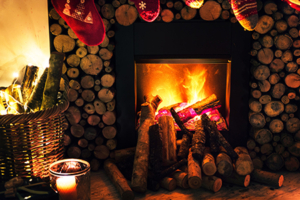 Ultimately, similarly to conventional construction, your new log home can be heated and cooled using any system you prefer. Whatever your preferences and specific needs may be, our trusted log home specialists are here to help you determine the best heating (and cooling) options for your new log home or timber frame home. So, stay under that Snuggie cradling that warm cup of coffee, and give us a call today!
Ultimately, similarly to conventional construction, your new log home can be heated and cooled using any system you prefer. Whatever your preferences and specific needs may be, our trusted log home specialists are here to help you determine the best heating (and cooling) options for your new log home or timber frame home. So, stay under that Snuggie cradling that warm cup of coffee, and give us a call today!

